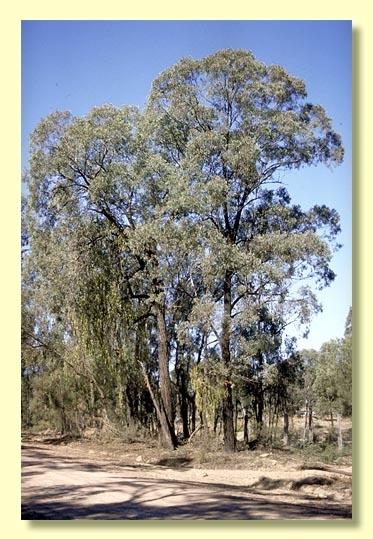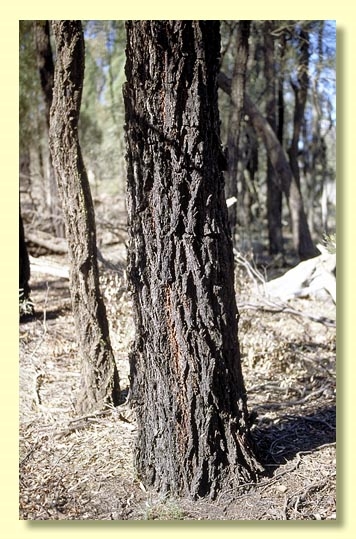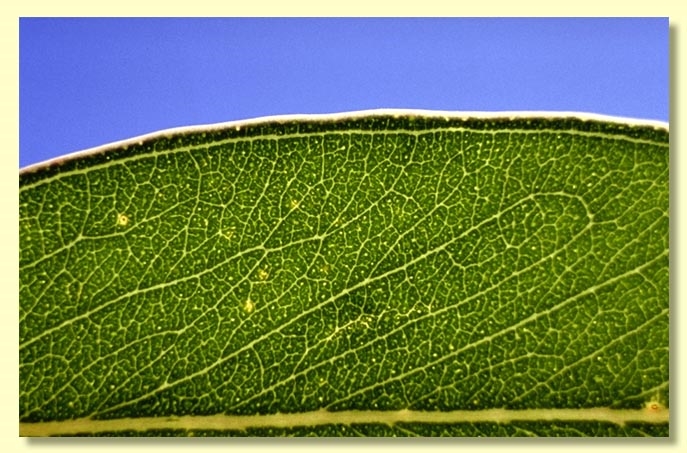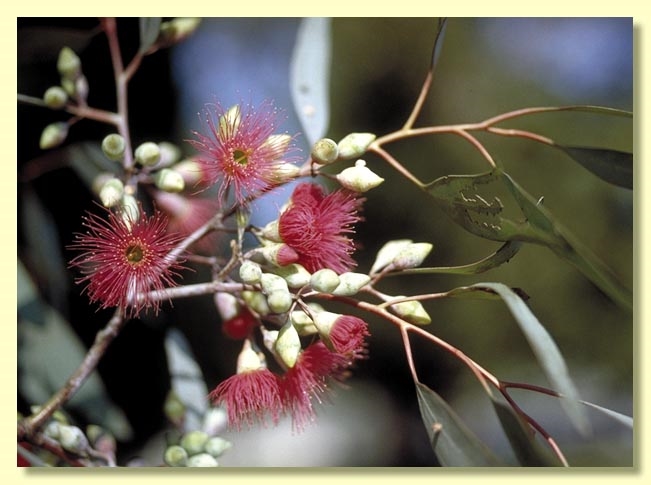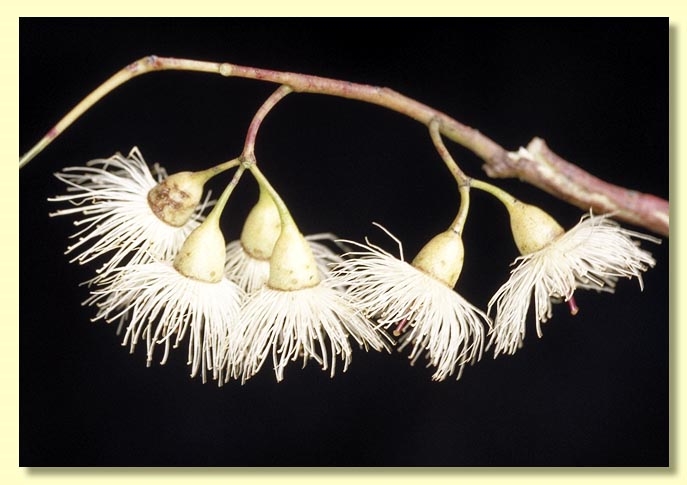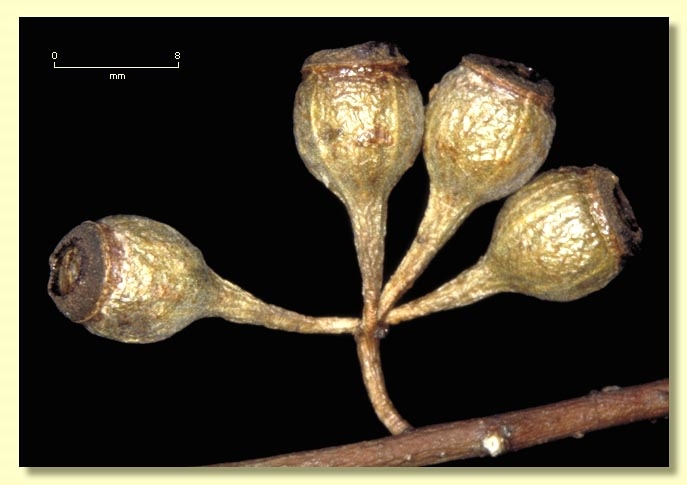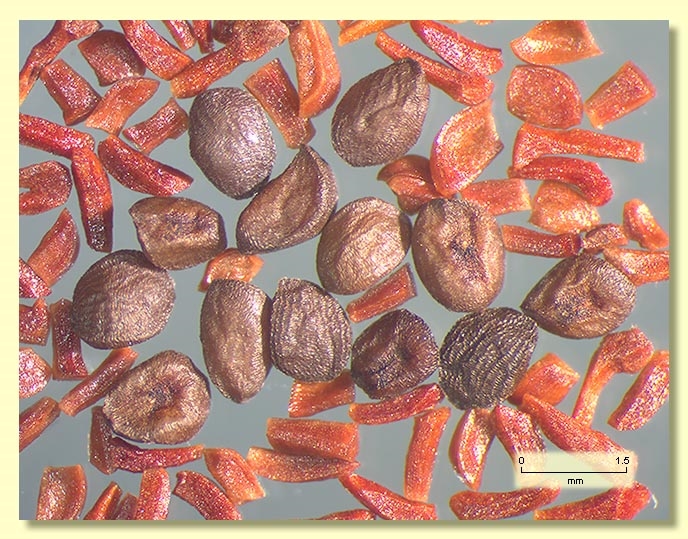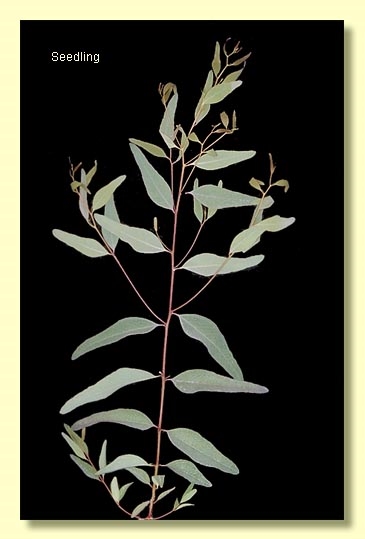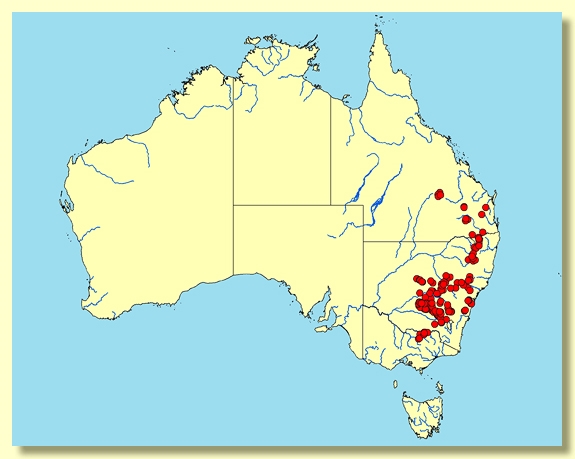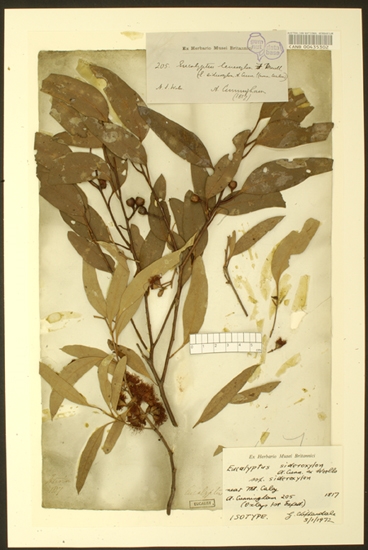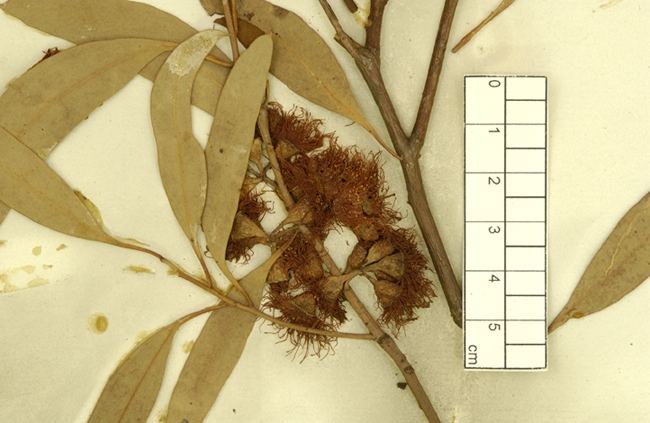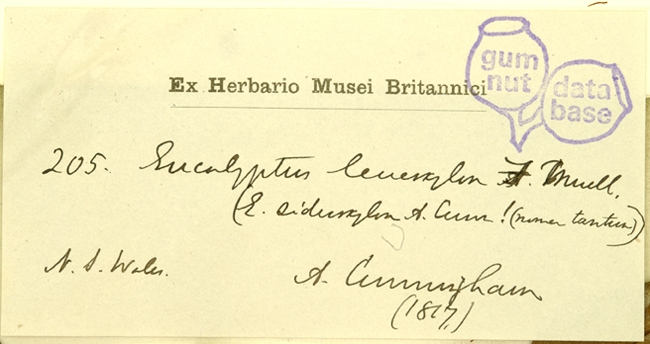Euclid - Online edition
Eucalyptus sideroxylon
Eucalyptus | Symphyomyrtus | Adnataria | Terminales | Melliodorae | Solidae
Eucalyptus leucoxylon var. minor Benth., loc. cit.; E. sideroxylon var. minor (Benth.) Maiden, Crit. Revis. Eucalyptus 2: 54 (1910). T; Parramatta, NSW, W.Woolls s.n.; lecto: K, fide L.A.S.Johnson, Contr. New South Wales Natl Herb. 3: 122 (1962).
Eucalyptus sideroxylon subsp. improcera A.R.Bean, Austrobaileya 8(2) 139-141(2010). T: Queensland: Leichhardt District: Waaje Scientific Area, Barakula State Forest, NNW of Chinchilla, 25 March 2010, A.R. Bean 29467; holo BRI; iso: CANB MEL NSW.
Ironbark throughout, dark grey, dark brown or black, deeply furrowed down trunk, branchlets glaucous or non-glaucous.
Juvenile growth (coppice or field seedlings to 50 cm): stem usually rounded in cross-section, glaucous or non-glaucous; juvenile leaves always petiolate, opposite for ca 4 to 7 pairs then alternate, lanceolate to oblong or linear, 3–11 cm long, 0.5–3.5 cm wide, base tapering to petiole, dull, green to grey-green or glaucous.
Adult leaves alternate, petiole 0.5–2.5 cm long; blade lanceolate, 5–14 cm long, 1–4 cm wide, base tapering to petiole, concolorous, dull, green to blue-green, grey-green, grey or glaucous, side-veins at an acute or wider angle to midrib, moderately to densely reticulate, intramarginal vein parallel to and just within margin or well removed from it, oil glands island and intersectional.
Inflorescence axillary unbranched, peduncle erect or pendulous, 0.7–2.9 cm long, buds 7 per umbel, pedicels 0.3–1.5 cm long. Mature buds ovoid or diamond-shaped, 0.6–1.5 cm long, 0.4–0.6 cm wide, green to creamy or glaucous, scar absent, operculum conical to beaked, stamens inflexed, outer stamens lack anthers (staminodes), anthers adnate, positioned obliquely at filament tip, cuboid, dehiscing by terminal pores, style long, stigma blunt or pin-head shaped, locules usually 5, the placentae each with 4 vertical ovule rows. Flowers white, red, pink, or yellow or lemon.
Fruit on pedicels 0.2–1.5 cm long, cup-shaped or truncate-globose, 0.5–1.1 cm long, 0.5–1 cm wide, staminophore broad and deciduous, disc descending, valves usually 5, enclosed.
Seeds brown, 1–2 mm long, ovoid or flattened-ovoid, sometimes lacunose, dorsal surface shallowly pitted, hilum ventral.
Cultivated seedlings (measured at ca node 10): cotyledons reniform to oblong; stems square to rounded in cross-section; leaves petiolate, opposite for 4 to 7 pairs, linear to lanceolate, 4.5–11 cm long, 0.5–3.5 cm wide, base tapering, margin entire, more or less concolorous, grey-green to green.
Flowering has been recorded in April, May, June, July, August, September, October, November and December.
A small to medium-sized woodland tree widespread on the western slopes and plains of New South Wales, also west of Sydney, extending south into northern Victoria in the area from Chiltern to Winton; also in south-eastern Queensland near Barakula, Wandai and on the Consuelo Tableland. It has blackish over dark red-brown ironbark throughout and variably green to glaucous crown; buds are distinctly axillary in umbels of 7
Eucalyptus sideroxylon has only one close relative, E. tricarpa, from which it differs by having seven-budded inflorescences and smaller buds and fruit. E. tricarpa occurs in coastal hills of south-eastern New South Wales from near Araluen south to Victoria, where it occurs extensively in coastal and southern montane areas and in the north central goldfields area. It has 3-budded inflorescences as the name tricarpa suggests. Plants seemingly intermediate between E. tricarpa and E. sideroxylon with buds in threes and sevens occur in some populations, e.g. Mt Nowa Nowa in Gippsland and Ben Boyd National Park near Eden.
Eucalyptus sideroxylon and E. tricarpa differ from all other ironbarks by the retention of the outer operculum on the bud until flowering when both are shed together as a unit.
In the classification of Brooker (2000) Eucalyptus sideroxylon is in subgenus Symphyomyrtus section Adnataria because the buds have two opercula, ovules are in four rows, seeds are flattened-ovoid, cotyledons are reniform, and anthers are rigid on the staminal filaments. Within section Adnataria, E. sideroxylon is part of a small subgroup, series Melliodorae, further characterised by having buds in axillary clusters, the outer operculum being retained until flowering when both opercula are shed together, and the flowers having outer stamens that are sterile whilst inner stamens are fertile, and a broad staminal ring that can often be seen on the fuit but ultimately is deciduous. The 5 species in series Melliodorae are E. sideroxylon, E. tricarpa, E. melliodora, E. leucoxylon (with 4 subspecies) and E. petiolaris.
MORE ABOUT IRONBARKS

